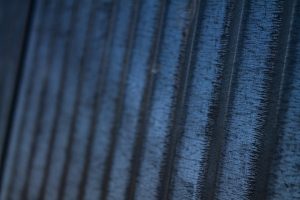
Have you heard of metal etching? Although it’s been around for centuries, it’s become an increasingly common process used in the manufacturing industry. Metal etching allowing manufacturing companies to create permanent designs — or other visual graphics — on the surface of metal. It’s more reliable and longer-lasting than other design processes. In this post, you’ll learn more about metal etching and how it works.
What Is Metal Etching?
The term “metal etching” refers to the creation of design or graphic on the surface of metal by removing some of the metal. In other words, the design or graphic isn’t printed onto the surface. Rather, it’s embedded into the metal, allowing for a superior level of longevity and durability.
There are different forms of metal etching. By far, however, the most common form is acid based. As the name suggests, acid-based metal etching leverages the corrosive properties of acid to create long-lasting designs on metal objects. Whether it’s copper, steel, aluminum, etc., most metals support acid-based etching. When a metal object is exposed to acid, it undergoes a chemical reaction that causes the exposed areas to erode.
The Basics of Acid-Based Metal Etching
With acid-based metal etching, the metal object is first coated with a waxy ground. The purpose of the waxy ground is to ensure that only the appropriate, desired area of the metal is directly exposed to the acid. Since waxy ground is resistant to acid, it naturally protects the metal object from damage.
After the waxy ground has been applied to the metal object, a worker uses an etching needle. The etching needle essentially cuts small holes into the waxy ground to reveal the underlying metal. It’s important to note that etching doesn’t cut into the metal itself; it only cuts into the waxy ground.
Once the worker has etched the design into the waxy ground, he or she submerges the metal object in an acidic solution. The acid will then come into direct contact with the recently etched areas. This triggers a chemical reaction in the etched areas to form a permanent design or pattern. The final step of acid-based metal etching involves cleaning the metal object.
Although it’s the most common form of metal etching, there are other ways to etch designs and graphics onto metal objects. Photo-etching, for example, is a more modern etching process that involves the application of light to light-sensitive plates made of polymer materials.
